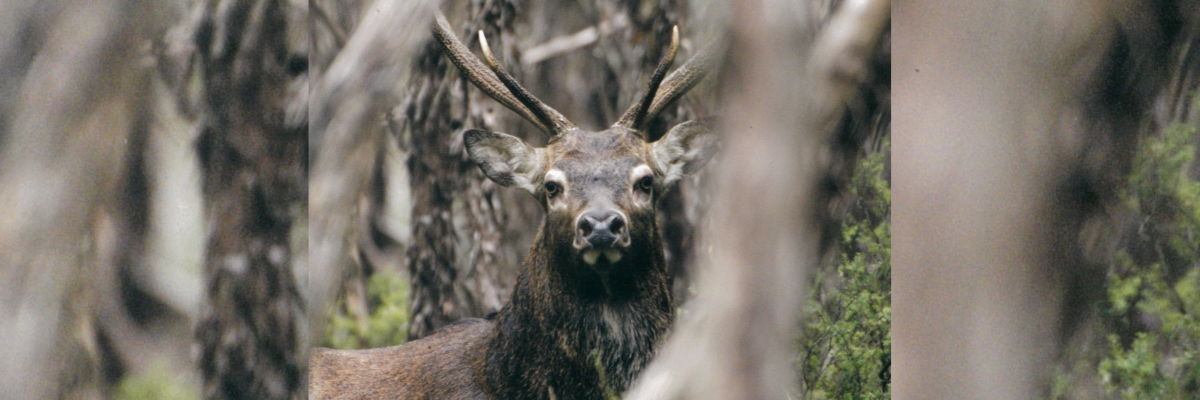Hunting and Wildlife Magazine - Issue 224 - Autumn 2024
Words By: Simon Careek, Managing Director, PracMed NZ
Author’s background:
Simon Careek has been an avid hunter and user of firearms from a young age to the present day. Having served on four deployments with the army and subsequently spending a subsequent 4.5 years in various hostile environments as a civilian contractor, he has been shown the importance of knowing good, basic medical skills that truly influence life and death outcomes.
Introduction:
As the roar approaches, New Zealand's hunting community gears up for the exhilarating pursuit of stags and bucks across the country's rugged and varied terrain.
In this season of preparation and anticipation, medical readiness is often overlooked. A key component? The tourniquet - a lifesaver in the wilderness.
Understanding tourniquets:
A tourniquet is a device used to apply limb occlusive pressure (LOP) to an extremity to completely stop the flow of blood in the event of a traumatic injury with an associated life-threatening bleed. In hunting, where injuries can occur far from immediate medical help, understanding the proper use of a tourniquet is essential.
Fast facts, the Dos & Don’ts:
- Do include a tourniquet as part of your First Aid Kit. Tourniquets are safe and save lives. All data indicates that pre-hospital tourniquet application in traumatic limb injuries significantly reduces mortality. A review in the ‘Journal of Trauma and Acute Care Surgery’ found that early tourniquet use increases survival rates by nearly 90% in severe limb trauma.
- Don't delay its application in a life-threatening bleed. The myth that tourniquets should only be a last resort is outdated and potentially harmful. If a tourniquet is required, the sooner it is applied, the better the outcome.
- Do learn the correct application via safe, practical training from a reputable provider (Contact PracMed NZ).
- Don't loosen or remove it once applied. The old advice of loosening a tourniquet every few minutes to restore circulation is a dangerous myth. Once in place, a tourniquet should only be converted or released by someone trained in a suitable environment, such as the emergency department. Every drop of blood lost is blood lost.
When to use a tourniquet
Tourniquets should be used in the instance of life-threatening bleeding. What is life-threatening bleeding? Unless you have been well-trained or exposed to this, the chances of placing a tourniquet when it is not required can increase.
We define life-threatening bleeding as:
1. Arterial bleeding from a limb. This is characterised by squirting, pulsing, or a continuous jet of bright red blood.
- Amputation above the wrist or ankle.
- Bleeding otherwise uncontrolled. Examples include extensive tissue damage, making packing and/or bandaging non-permissible, or if a casualty was trapped within machinery or a vehicle with active bleeding.
So, how do we use a tourniquet?
The most critical aspect of successfully using a tourniquet is ensuring the limb occlusive strap is as tight as possible and has no slack. Slack hinders the mechanical advantage of the windlass, which is detrimental to gaining LOP and ultimately stopping the bleeding. Once the occlusive belt has the slack removed, use both hands (if able) to twist the windlass until the bleeding stops. Be aware this will cause the casualty a varying degree of pain - this is par for the course. The first time you do this can be confronting, especially if you are not prepared for the pain response.
Once bleeding has stopped, secure the windlass and record the time. Ensure you know where your tourniquet's “time tab” is and carry a permanent marker. This will assist emergency physicians in making decisions about the removal process.
Myth busting:
- Myth: Tourniquets cause more harm than good.
- Reality: Modern medical evidence strongly supports tourniquet use in prehospital trauma care. The risk of complications, such as nerve damage or limb loss, is significantly lower than the risk of death from uncontrolled bleeding.
- Myth: Tourniquets are a last resort.
- Reality: They are a primary tool for life-threatening haemorrhages in limbs and should be used promptly.
- Myth: Improvised tourniquets are a good substitute when you can't find proper tools.
- Reality: While improvisation is better than doing nothing, the effectiveness of an improvised tourniquet is uncertain. Time is critical in controlling severe bleeding – searching for makeshift materials can waste precious seconds. An actual tourniquet is designed for quick application and effective bleeding control. Those few seconds can be the difference between life and death in an emergency.
- Myth: A cheap tourniquet is better than none.
- Reality: Quality matters immensely in life-saving equipment. Tourniquets from unreliable sources like Wish.com or Alibaba do not meet safety standards, and sadly, many retailers in NZ do not understand what they are selling. Cheap tourniquets have no quality control and are made from inferior materials, so they will almost certainly fail when you need them most.
It's crucial to invest in high-quality, tested tourniquets from reputable suppliers with quality controls in place, such as the SOF® Tactical Tourniquet - Gen. 5 (NZ$68.80), or the CAT Tourniquet - Gen. 7 (NZ$76.80). Consider it a one-time purchase that, although you hope never to use it, must be reliable in a critical moment. The integrity of your gear can be the deciding factor in a survival situation. if you are unsure whether your tourniquet is a legitimate design or fake - we are happy to help.
Conclusion
As hunters, we invest heavily and prepare meticulously for our adventures - from purchasing and sighting in rifles, developing loads, and ensuring ballistic calculators and rangefinders are clean and have fresh batteries. Let's not forget to protect the most vital aspect of the hunt - ourselves.
The importance of medical preparedness cannot be overstated. Understanding the correct use of tourniquets can mean the difference between life and death in the wilderness. As the roar calls, ensure that you're equipped not just for the hunt but also for safety and survival. Remember, when it comes to bleeding control, time runs out quickly.
Electronic or print copies
Members receive an electronic version by email but printed copies can be ordered (for a print and postage fee) which will be delivered to your home.
To order printed copies visit our NZDA Shop at www.nzda.shop
Read Previous Editions Online
Read the historic editions online for free now. Browse here.
Write for Hunting and Wildlife



